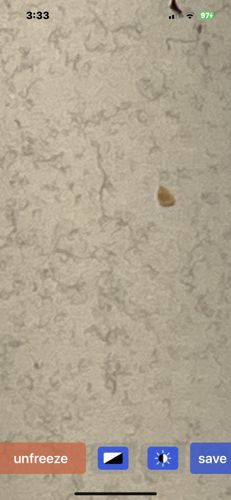Case-bearing Clothes Moth (or related case-making moth)
Scientific Name: Tinea pellionella (common clothes moth that makes a case) or similar Tineidae species.
Order & Family: Lepidoptera (moths and butterflies), Tineidae (fungus moths and clothes moths) - likely Tineidae due to case-bearing nature and appearance.
Size: Larvae can grow up to 10-15 mm. Adults (moths) typically have a wingspan of 9-16 mm.

Natural Habitat
Primarily indoor environments, especially in dark, undisturbed areas where suitable food sources (natural fibers) are abundant. This includes closets, attics, storage areas, and under furniture.
Diet & Feeding
Larvae feed on natural fibers such as wool, fur, feathers, hair, felt, and silk. They are known household pests that can damage clothing, carpets, upholstered furniture, and natural fiber items. Less commonly, they may feed on dried plant materials.
Behavior Patterns
Case-bearing insects that construct a silken case, often camouflaged with surrounding debris or food particles. These cases are carried by the larva as it feeds and grows, providing protection. Adults are typically small moths that are weak fliers and short-lived.
Risks & Benefits
Potential risks include significant damage to textiles and other items made of natural fibers, leading to economic loss. They generally pose no known health risks to humans (e.g., bites or stings). There are no direct benefits to humans, but as part of the broader ecosystem, they are primary decomposers of natural animal products.
Identified on: 8/31/2025